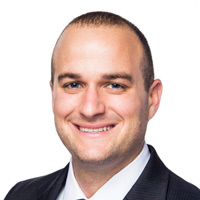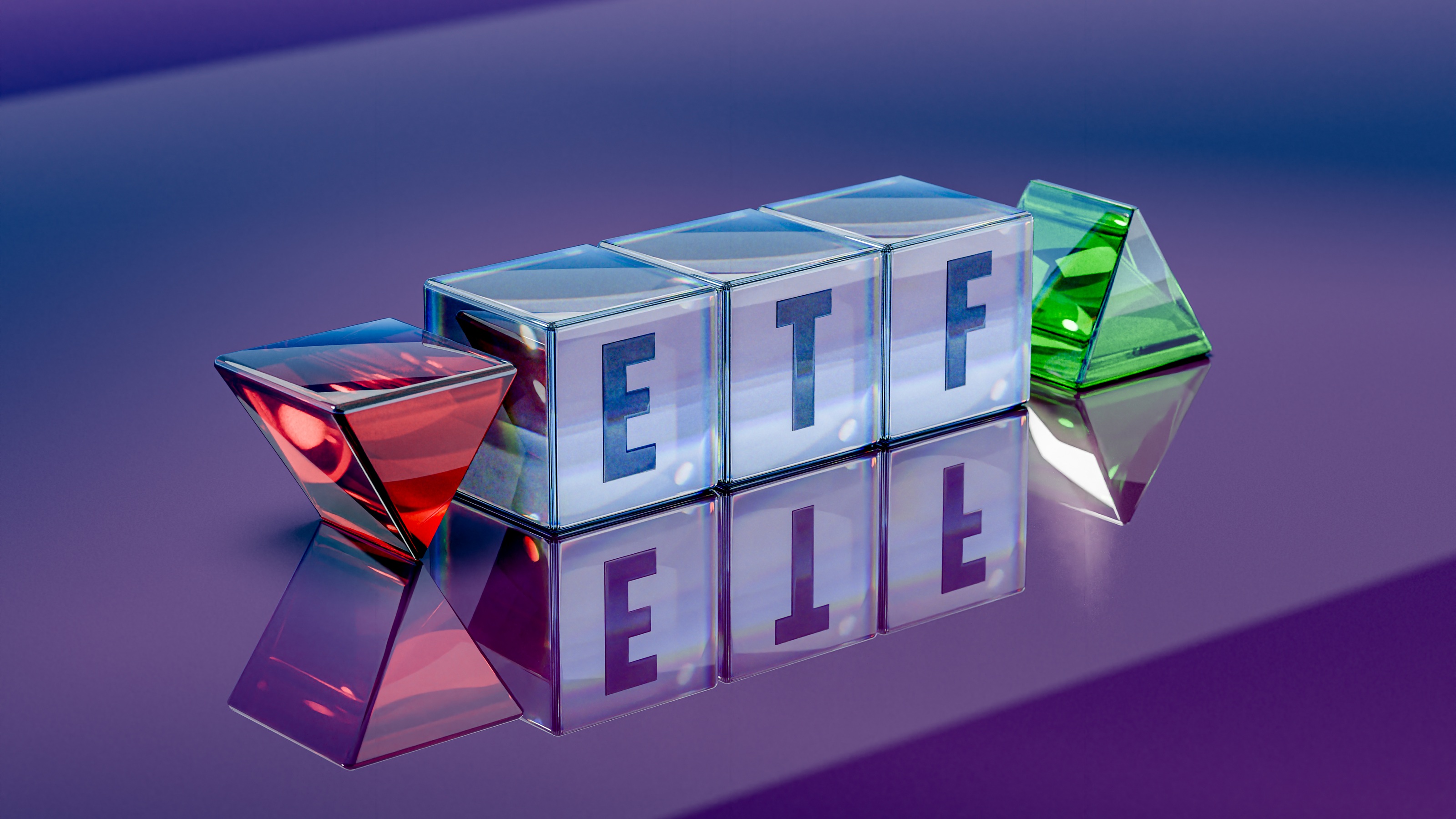Retirement Requires a Shift in Thinking
The risk-reward equation changes when you retire. It's no longer about growing your wealth: It's about protecting what you've got. So get ready to flip your mental switch from accumulation mode to preservation.

For most of your investing life, you’ve probably been encouraged to build a portfolio that balances risk and return — achieving the highest returns possible based on your personal tolerance for risk.
For most people, that means living with a certain amount of volatility in exchange for growing a comfortable nest egg for their retirement years. You can lose money taking on too much risk, of course, but you won't gain much ground being too risk-averse. So, a larger investment in the stock market (60%, 70% or more) would be a must for those looking to help grow their wealth over the long term.
In retirement, though, things are different, and a shift in thinking is required.
From just $107.88 $24.99 for Kiplinger Personal Finance
Be a smarter, better informed investor.

Sign up for Kiplinger’s Free Newsletters
Profit and prosper with the best of expert advice on investing, taxes, retirement, personal finance and more - straight to your e-mail.
Profit and prosper with the best of expert advice - straight to your e-mail.
The goal for most people should change as retirement nears — from growing their nest egg to helping to protect their savings and ensuring the money they’ve accumulated can provide them with enough income to last 20 to 30 years or more.
That means a shift in mindset and a transition in strategies.
The problem is, the financial industry has done such a good job of pushing accumulation at (almost) any cost, it can be tough for some to switch their focus to the next stages of investing: preservation and distribution.
Recently, for example, we put together a retirement plan for a potential client who had saved a hefty chunk of money — more than $3 million. We included an income plan — using a bucketing strategy — that laid out where he would get his money in retirement.
With bucketing, we typically look at three time frames, which could be labeled “now,” “soon” and “later.”
The “now” bucket is designed to cover living expenses and larger emergency expenses in the first years of retirement. The “soon” bucket holds money you may need to access a few years down the road. And both buckets are built to withstand a market downturn early in retirement — a time when “sequence of returns risk” can devastate a portfolio.
In this case, the first bucket, the “now” bucket, was set up with cash equivalents and fixed-income investments. The second, “soon,” bucket included equities (about 50%). The third, “later,” bucket had a higher percentage of equities, designed for long-term growth and legacy planning.
When presented with the potential plan, the client felt that we had put too much into fixed income, especially at the beginning of the plan. The client thought more growth opportunity was needed and wanted to take more risk. So, rather than focusing on how to generate income from the portfolio, the client was still focusing on trying to achieve potential higher rates of return.
We had covered the biggest concerns the client had come to us with: How long the money would last, and where exactly to pull income from. But in the end, the client focused more on maximizing the rate of return.
Those are two different goals.
I can’t blame the investor, who had been trained for 30 years to think about risk and reward, account values and returns.
But I do hope, as an industry, we can help people understand that:
- Cash and fixed-income investments can play a critical role in weathering economic storms and can help protect what individuals have in retirement.
- Each investment has valuable features people can use to their advantage. But needs are different in retirement, and a person’s plan should reflect that.
- Even if they can handle a more aggressive investing strategy, why risk it if they don’t have to?
In retirement, it’s important to think of your savings as income rather than a lump sum. It’s not all about achieving maximum return on investment anymore; it’s about how you can get the maximum return from your portfolio and into your pocket.
Instead of sticking with a collection of random investments or going with a cookie-cutter asset allocation, talk with your adviser about ways to help build a strategic plan for how you’re going to distribute your assets to yourself.
Kim Franke-Folstad contributed to this article.
Fee-based financial planning and investment advisory services are offered by Imber Financial Group LLC, a Registered Investment Advisory Firm, and Capital Asset Advisory Services LLC, an SEC-Registered Investment Adviser (Registration does not imply a certain level of skill or training). Insurance products and services are offered through Imber Wealth Advisors Inc. Imber Financial Group LLC and Imber Wealth Advisors Inc. are affiliated companies. Investing involves risk, including the potential loss of principal.
The appearances in Kiplinger were obtained through a PR program. The columnist received assistance from a public relations firm in preparing this piece for submission to Kiplinger.com. Kiplinger was not compensated in any way.
Profit and prosper with the best of Kiplinger's advice on investing, taxes, retirement, personal finance and much more. Delivered daily. Enter your email in the box and click Sign Me Up.

Jon Imber is the president and owner of Imber Wealth Advisors. A fiduciary adviser, he has passed the Series 65 exam and holds a life insurance license in Michigan. He's a member of the Financial Planning Association and a Registered Financial Consultant (RFC®). He earned his bachelor's degree in marketing and business administration from Northwood University.
-
 Stocks Hit Fresh Highs Ahead of the Fed As Earnings Pump Optimism: Stock Market Today
Stocks Hit Fresh Highs Ahead of the Fed As Earnings Pump Optimism: Stock Market TodaySHW and UNH were two of the best Dow Jones stocks Tuesday, thanks to solid earnings reports, and MSFT closed with a $4 trillion market cap.
-
 Selling Your Haunted House? What You Have to Tell Buyers (and What You Don’t)
Selling Your Haunted House? What You Have to Tell Buyers (and What You Don’t)You don’t need ghosts to spook buyers, sometimes a home’s past is enough. Here’s what sellers should know about disclosure laws, pricing and perception when a property has a haunted history.
-
 Debunking Three Myths About Defined Outcome ETFs (aka Buffered ETFs)
Debunking Three Myths About Defined Outcome ETFs (aka Buffered ETFs)Defined outcome ETFs offer a middle ground between traditional equity and fixed-income investments, helping provide downside protection and upside participation.
-
 This Is Why Judge Judy Says Details Are Important in Contracts: This Contract Had Holes
This Is Why Judge Judy Says Details Are Important in Contracts: This Contract Had HolesA couple's disastrous experience with reclaimed wood flooring led to safety hazards and a lesson in the critical importance of detailed contracts.
-
 A Lesson From the School of Rock (and a Financial Adviser) as the Markets Go Around and Around
A Lesson From the School of Rock (and a Financial Adviser) as the Markets Go Around and AroundIt's hard to hold your nerve during a downturn, but next time the markets take a tumble, remember this quick rock 'n' roll tutorial and aim to stay invested.
-
 I'm a Financial Pro: This Is How You Can Guide Your Heirs Through the Great Wealth Transfer
I'm a Financial Pro: This Is How You Can Guide Your Heirs Through the Great Wealth TransferFocus on creating a clear estate plan, communicating your wishes early to avoid family conflict, leaving an ethical will with your values and wisdom and preparing them practically and emotionally.
-
 To Reap the Full Benefits of Tax-Loss Harvesting, Consider This Investment Strategist's Steps
To Reap the Full Benefits of Tax-Loss Harvesting, Consider This Investment Strategist's StepsTax-loss harvesting can offer more advantages for investors than tax relief. Over the long term, it can potentially help you maintain a robust portfolio and build wealth.
-
 Social Security Wisdom From a Financial Adviser Receiving Benefits Himself
Social Security Wisdom From a Financial Adviser Receiving Benefits HimselfYou don't know what you don't know, and with Social Security, that can be a costly problem for retirees — one that can last a lifetime.
-
 Take It From a Tax Expert: The True Measure of Your Retirement Readiness Isn't the Size of Your Nest Egg
Take It From a Tax Expert: The True Measure of Your Retirement Readiness Isn't the Size of Your Nest EggA sizable nest egg is a good start, but your plan should include two to five years of basic expenses in conservative, liquid accounts as a buffer against market volatility, inflation and taxes.
-
 New Opportunity Zone Rules Triple Tax Benefits for Rural Investments: Here's Your 2027 Strategy
New Opportunity Zone Rules Triple Tax Benefits for Rural Investments: Here's Your 2027 StrategyNew IRS guidance just reshaped the opportunity zone landscape for 2027. Here's what high-net-worth investors need to know about the enhanced rural benefits.
